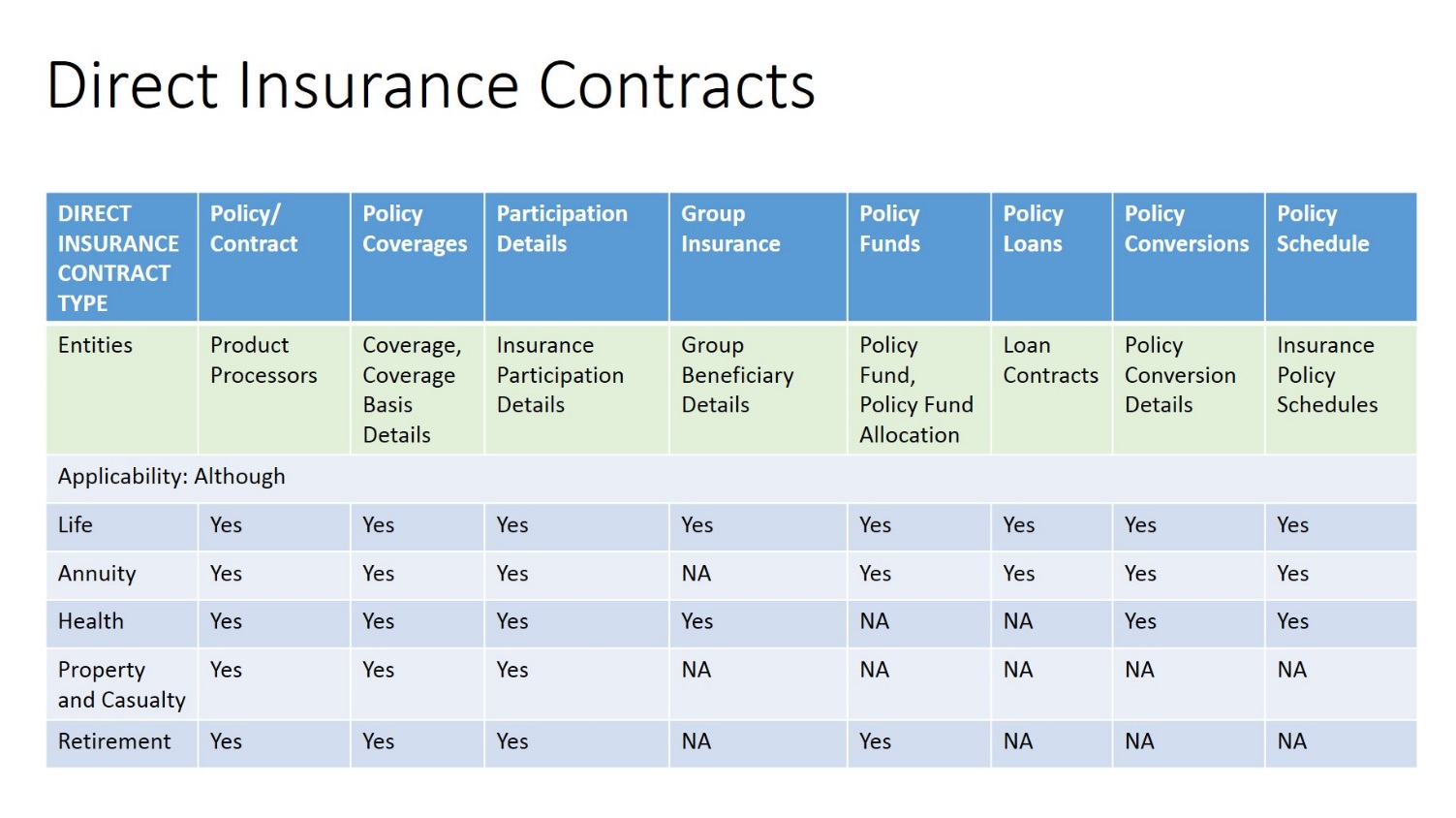

This diagram elaborates the OIDF design for Direct Insurance Contracts. The base contract is loaded in the contract table, and coverages or riders are loaded to the coverages tables. One policy can contain more than one coverage. Depending on the applicability, a policy can consist of a fund associated with it and/or a loan associated with it.
To load an Insurance Contract in OIDF:
1. The key components in contract structure are Product, Party, and Contract itself. Under contract component, the user must choose one of the Product Processors from Life, Annuity, Property and Casualty, Retirement and Health.
2. Load Policy Coverages with Product Processor for multiple benefits or coverages.
3. Some contracts such as Annuity requires funds where market risk is with the policyholder. Load this information to Policy Funds. This is an optional step and is dependent on the product structure.
4. Some contracts specify adhoc or varying Policy Schedules such as Credit Life Insurance, varying premium policies etc., where sum insured and premium amounts vary depending on the outstanding debt or other criteria. In such cases, customer can choose to load Policy Schedules in Stage Policy Schedules.
5. In case of Group Insurance Contracts, the contract between the insurance provider and a company or group must be stored in either Life, Health, or applicable product processor. Stage Group Insurance Beneficiary Details holds details of each member such as individual limits, individual usage, and identifiers such as card numbers, annual and per condition deductibles.
6. For loans issued under a given policy, load contracts into one of the Insurance product processor, and load every loan contract issued under a given policy to stage loan contracts. Refer to the section Policy Loans.
7. Contracts, which are convertible from one insurance product to another with or without changing the insurance carrier, require additional conversion details. For more details, refer to Policy Conversion.
In OIDF, Direct Insurance Contracts comprise of following important components:
· Contract
· Coverage
Party, which means beneficiary, producer and agent, underwriter etc., are expected to be created and available for reference in the Party set of tables based on the related role. For details, see Party Subject Area chapter.